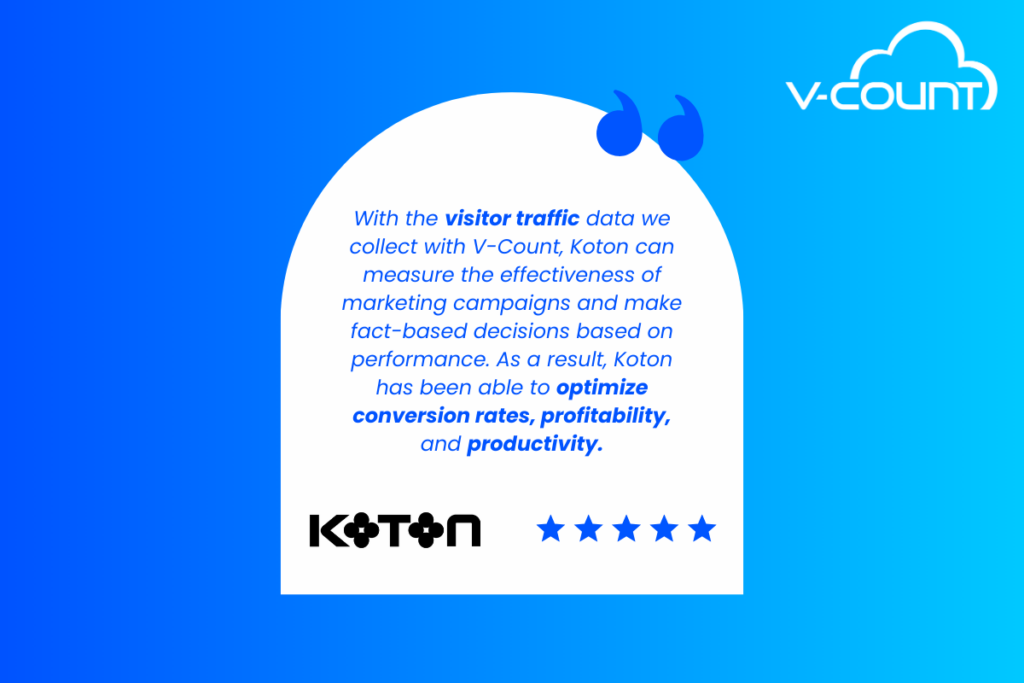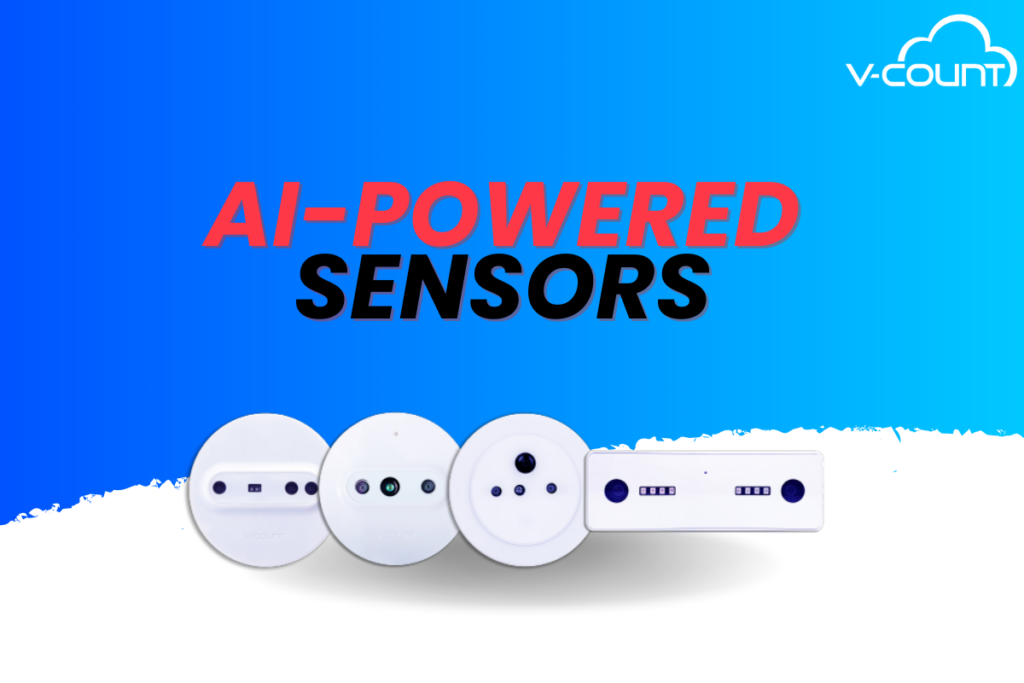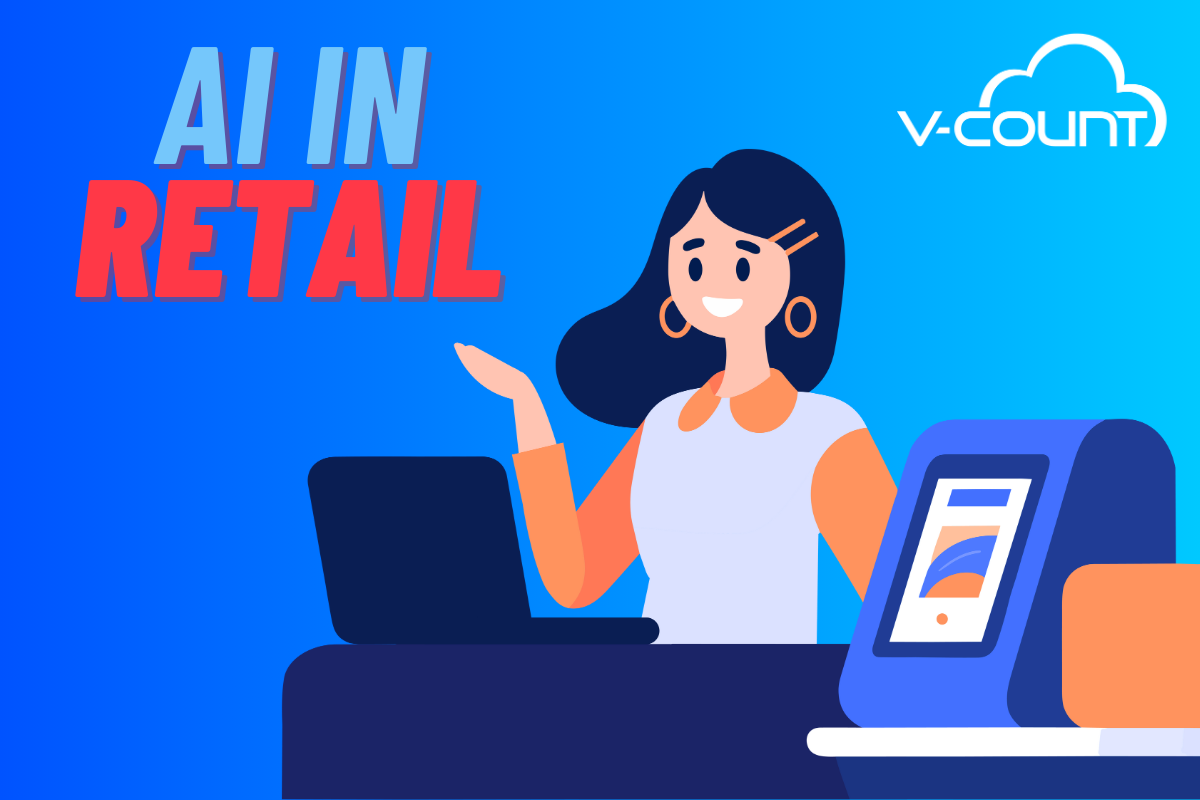AI technologies have become a part of our daily life in the last two years. First, visual producing AI solutions like Dall-E, Stable Diffusion, and Midjourney gained popularity among masses, then language-based AI solutions like ChatGPT entered our lives.
Despite the fact that these innovations might seem quite new for everyday use, the reality is that corporations and businesses have been harnessing the power of AI for quite some time now, integrating these technologies into their operations in a multitude of ways.
Now, it seems, the spotlight has turned towards the traditional brick and mortar retail shops. With the game-changing potential of AI, these businesses are entering a new and exciting era, ready to improve their operations and create a whole new retail experience!
In this blog post, we’ll explain Artificial Intelligence (AI) in simple language. We’ll start by defining AI and its types. Then, we’ll talk about how all types of retail businesses can use AI, from improving inventory management to customizing customer experience. So let’s get started on this exciting journey of discovery.
Table of Contents
What is Artifical Intelligence (AI)?
Artificial Intelligence (AI) is a subset of computer science. It’s focused on creating software that can learn and comprehend like humans. This involves enabling computers to perform tasks that normally require human intelligence.
Although some sources mention seven types, there are primarily four types of AI.
The first one is Reactive;
Reactive type AIs, one of the earliest AI systems, were quite limited. These AIs merely mimicked human behavior and lacked the capability to learn. This was due to their lack of memory, preventing them from acquiring new knowledge.
The second type is Limited Memory;
Most AI applications, like deep learning systems, function as limited memory machines. They learn from large datasets to make decisions and solve future problems. For instance, image recognition AI can label new images after training on labeled ones. Chatbots, virtual assistants, and self-driving cars primarily operate on these principles.
The third one is Theory of Mind;
Theory of Mind AI is nearing the sphere of genuine decision-making, paving the way for substantial dialogues with human-like robots. While the dynamic nature of human communication presents challenges, advancements like Sophia’s ability to recognize faces and respond with expressions underscore progress in developing emotionally intelligent machines.
And the last one is Self-aware type;
AI that knows itself, like a human, is the top goal of artificial intelligence. This high-level AI is beyond what we can make now and makes us think about future progress. As we learn more in science, knowing about different kinds of AI helps us understand this progress.
After understanding the basics of artificial intelligence (AI), let’s explore how this technology affects the retail industry. We’re going to explore the reasons why retail shops should consider integrating AI technologies into their operations and the methods by which they can effectively do so. This will provide a comprehensive guide for those in the retail industry who are contemplating the use of AI to enhance their business processes and customer experiences.
Why Is It Essential for Retailers to Use AI-Integrated Technology?

In the rapidly evolving retail environment of today, the adoption of Artificial Intelligence (AI) has become an essential strategy to remain competitive. AI, with its advanced algorithms and predictive analytics, is revolutionizing the way retailers operate their businesses. It provides retailers with a wealth of opportunities to improve operational efficiency, enhance customer experience, and ultimately drive more sales. Therefore, embracing AI technology is not just a luxury but a necessity for retailers who wish to stay ahead in the competitive market. The benefits of AI adoption in retail operations are numerous, including the ability to predict consumer buying patterns, optimize inventory management, provide personalized shopping experiences, and so much more. Let’s take a closer look!
Improved Customer Engagement and Experience
AI facilitates a deeper connection between stores and shoppers by delivering highly personalized experiences. These innovations help build brand loyalty and repeat business, as customers grow to appreciate the tailored interactions.
In addition, with AI-powered people counting solutions – like the ones developed by V-Count – you can measure the effectiveness of your marketing campaigns and the different in-store experiences your customers engage with. With our Heatmap and Zone analytics solutions, you can see where customers create the most footfall traffic and increase effectiveness by positioning your campaigns in these areas.
Enhanced Operational Efficiency and Cost Savings
Automating routine tasks with AI allows retailers to focus on core business activities while reducing costs associated with labor and human error. Efficiency gains translate to improved margins and better resource allocation.
Efficient staff utilization is a common challenge for many retail owners. Fortunately, visitor analytics tools like BoostBI can help address this issue. By leveraging data on peak customer times, you can optimize both staffing and product allocation. This not only ensures customer satisfaction but can also help improve conversion rates.
Data-Driven Decision Making
Insights gleaned from AI analytics empower retailers to make informed decisions. Access to real-time data means being able to pivot quickly and strategically in response to market trends or consumer feedback.
As mentioned earlier, visitor analytic tools offer numerous benefits for retail owners. Tools such as BoostBI and next-generation plug-and-play sensors like Nano allow easy installation of people-counting sensors in your store. With an accuracy of up to 99%, these tools provide detailed information about customer behaviors, facilitating data-driven decision-making processes.

Competitive Advantage in the Market
Adopting AI technologies allows retailers to distinguish their brand from competitors. Staying ahead of tech trends can help capture the attention of tech-savvy shoppers and position a brand as a leader in innovation.
In fact, major retail chains are recently gaining a competitive edge by measuring the effectiveness of marketing campaigns with people counting solutions. They analyze performance on a store-by-store and location basis. By noting which stores are underperforming and which campaigns are most beneficial for specific stores and locations, they can calculate foot traffic and conversion rates. This allows them to easily stay two steps ahead of their competitors.
AI Technologies in Retail
Machine Learning in Customer Personalization
Machine learning algorithms analyze vast amounts of data to understand customers’ buying behaviors and preferences. By leveraging this data, retailers can design tailor-made experiences, offering product recommendations and promotions that resonate with individual consumers’ tastes.
Chatbots and Virtual Assistants for Customer Support
AI-powered chatbots have emerged as the go-to solution for providing seamless customer support. These intelligent assistants can handle inquiries, resolve issues, and provide shopping assistance 24/7, ensuring constant customer engagement without the overhead costs of traditional support centers.
Computer Vision for Enhanced Shopping Experiences
Computer vision technology has paved the way for features like virtual try-ons and smart mirrors, bringing the convenience and novelty of online shopping to brick-and-mortar locales. This immersive tech enhances the customer experience, making it interactive and more engaging.
AI-Powered People Counting Sensors
Our proprietary people counting sensors are designed to provide a variety of solutions that can help retailers understand their customer flow and behavior in a more nuanced way. These solutions include demography analytics, which can help retailers understand the age, gender, and other demographic characteristics of their customers.
Queue management capabilities are also provided, allowing retailers to monitor and manage the flow of customers in real-time, reduce waiting times, and optimize staff allocation. Additionally, our sensors offer in-depth insights via storefront and zone analytics, enabling retailers to understand how customers interact with their physical spaces, which areas attract the most attention, and how customer movement patterns change over time.
By having a more comprehensive understanding of customer flow and behavior, retailers can fine-tune their marketing, product placement, and overall store layout strategies to enhance the shopping experience, increase customer satisfaction, and ultimately drive higher sales.

Transformations in Shopping
Evolution of Physical Retail Stores
Physical stores are adapting AI to retain their relevance and appeal. Interactive kiosks, augmented reality, people counting solutions and smart inventory systems blend the best of digital and physical worlds, ensuring brick-and-mortar retail remains a key player in the industry.
Integration of Online and Offline Experiences
The future of retail is deeply intertwined with the successful integration of online and offline channels. As we continue to navigate the digital age, it has become increasingly clear that businesses must adapt to meet evolving consumer demands. This includes creating a seamless shopping experience that incorporates both online and offline elements. Whether it’s the convenience of online shopping with home delivery or the tactile experience of physical retail, the key to success lies in merging these two worlds. This holistic approach to retail, which caters to all aspects of the consumer’s shopping journey, is undeniably the future of the industry.
Personalized Recommendations and Targeted Advertising
Artificial Intelligence (AI) is a powerful tool that empowers retailers to craft highly personalized marketing campaigns that resonate with their target audience. By analyzing intricate shopping patterns and individual preferences, brands are able to gain a deeper understanding of their customers. This information helps them create ads that grab consumers’ attention and encourage them to buy, increasing sales. Also, these custom experiences make customers feel closer to the brand. This helps build loyalty and makes customers want to come back. So, AI is changing the way the shopping industry works, and how brands connect with their customers.
Challenges and Considerations

Data Privacy and Security
With great power comes great responsibility—and AI is no exception. Retailers must ensure that they protect customer data, uphold privacy standards, and maintain consumer trust. For instance, when using a people counting solution, the solution must be fully GDPR compliant. It should not collect personal data, process data on another server, or allow recognizable images of people. At V-Count, we meet these criteria. Our GDPR-compliant sensors ensure the protection of your customers’ privacy.
Workforce Adaptation and Training
Employees are required to adapt to the significant changes brought about by the advent of Artificial Intelligence (AI). This implies a critical need for investing in comprehensive training programs. These programs are designed to equip the workforce with the necessary skills and knowledge to efficiently navigate and utilize new technologies and processes. By doing so, employees can seamlessly transition into the digitalized retail environment and continue to provide high-quality service to customers, thus ensuring the overall success and sustainability of the business in the face of technological advancement.
Integration and Compatibility of AI Systems
It’s very important e for artificial intelligence (AI) systems to integrate seamlessly with the existing retail infrastructure. These AI systems need to be designed and implemented in such a way that they can work in harmony with the current systems in place, thereby ensuring a smooth transition and minimizing any potential disruptions.
Overcoming the various technical challenges that may arise during this integration process is an integral part of the task. This includes, but is not limited to, addressing software compatibility issues, hardware requirements, and data privacy concerns. Furthermore, ensuring compatibility with legacy systems, which are often ingrained in the operational processes of retail businesses, is absolutely vital for successful adoption. Without this compatibility, AI systems risk becoming an obstacle rather than a tool for efficiency and innovation. Therefore, it’s crucial that AI integration in retail is done thoughtfully and systematically, to truly leverage its potential benefits.
Conclusion
As we’ve seen, AI is not just a fleeting trend—it’s a transformational force redefining the retail industry. With each improvement in AI technology, retailers unlock new opportunities to captivate and serve their customers. For players in the retail game, leveraging AI technologies, like our people counting sensors, isn’t just a strategic move—it’s becoming a necessity for survival and sustainable growth in a crowded marketplace.
With that said, the retail landscape is ripe for innovation, and for those willing to embrace AI, the rewards will be profound. There’s never been a more exciting time to be in retail—as technological advancements continue to unveil the full potential of AI in creating remarkable shopping experiences.
So, what’s the next step? Embrace the future by incorporating the power of AI into your retail strategy today and book a meeting with our team to learn more about our AI-powered people counting sensors!





